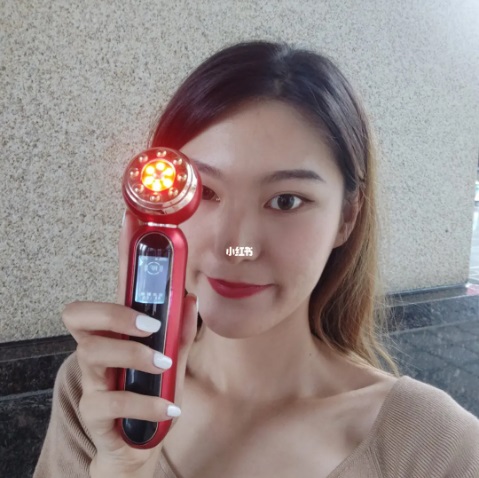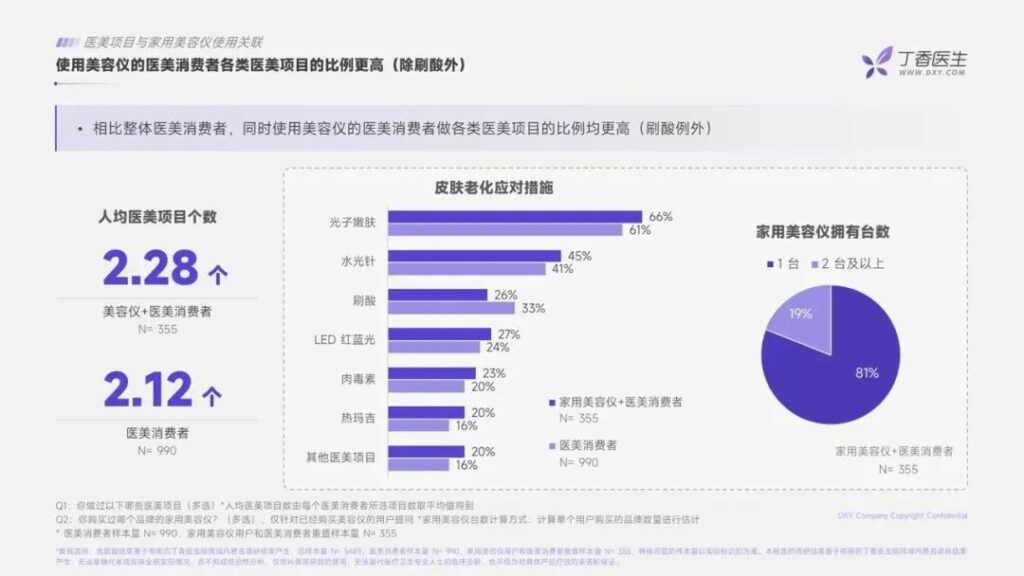With the burgeoning trends of the “aesthetic economy” and “technological skincare”, China’s home beauty device market has entered a period of thriving growth.
A Blend of Aesthetics and Technological Skincare in China
Data from Ou te ou Consulting indicates that from January to April this year, the online GMV (Gross Merchandise Value) for beauty device products reached 49.53 billion yuan, marking a year-on-year increase of 45.69%. According to Magic Mirror Market Intelligence, during the 618 sales event, Taobao and Tmall’s beauty device segment experienced a surge of over 60%. Additionally, sales of beauty and health appliances on the JD.com platform led the personal care appliances category.
But what drives this rapid growth in the beauty device sector? Who are the primary consumers? And how is the competitive landscape distributed among players in the industry? In this article, we delve into these questions, drawing on publicly available brand information and third-party data.

Upgraded Skincare Fuels the Beauty Device Market; Medical Aesthetic Users Potentially the Next Wave
It’s an industry consensus that users are becoming more rational in their consumption patterns. However, being rational doesn’t necessarily mean downgrading consumption. Especially among female consumers, the CBNData “2023 Quality Life Consumption Trend Report” indicates that women from the post-80s, 90s, and Generation Z display a penchant for immediate and high-quality consumption during their moments of self-indulgence.
Rise of beauty devises in China
Skincare, an integral aspect of self-care, has undergone a comprehensive evolution in recent years. The meteoric rise of the beauty device market is a direct consequence of consumers’ desire for an enhanced skincare routine.
How Social Media and Tech Shape China’s Skincare Revolution
The surging aesthetic economy has amplified the dissemination of skincare tips on social media, leading to an iterative evolution in users’ skincare philosophies. The “2023 Massive Engine Technological Skincare Whitepaper” suggests that consumers are transitioning from natural skincare to efficacy-based skincare, and now to technology-infused skincare. Additionally, the CBNData “2023 Ali Mama Female Trend Report” highlighted that 94% of women are inclined to try new products due to “innovative black technology”.
Little Red Book is the main social Media for beauty

Moreover, the era of “one product, multiple uses” is fading, as skincare needs become more segmented, prompting the rapid rise of niches such as anti-aging and night care. The hashtag #antiaging on Xiaohongshu alone garnered 1.26 billion views.
A survey by Magic Mirror Market indicates that when it comes to tightening and anti-aging needs, consumers prefer beauty devices.
The slow-acting skincare products, home beauty devices have emerged as a top choice for “efficient skincare”. This suggests that in the challenging arena of anti-aging, users are leaning towards high-tech products with greater R&D barriers.
Young female consumers

Demographically, the primary buyers of home beauty devices are women, especially those from the post-90s and 95s generation who are concerned about early signs of aging.
Data from Hua Jing Industry Research Institute indicates that 90% of consumers are under 35 years old, with almost 30% below 25.
Interestingly, medical aesthetic users are potential powerhouses for the beauty device clientele. The Home Beauty Device Perception and Anti-aging Consumer Behaviors , when confronted with skin aging, consumers prefer beauty salon treatments and home beauty devices over masks and serums.
Why ?

The reasons are twofold: some home beauty devices can somewhat replace medical aesthetic treatments, and they also cater to post-medical beauty skincare needs.
45% of Thermage users surveyed by Dingxiang have purchased beauty devices to complement and prolong the effects of medical aesthetic treatments.
Rich Product Categories, Numerous Players, The Industry Needs Standardization
Based on their technological principles, current home beauty devices on the market can be classified into six major categories:
- Devices utilizing sonic technology make their heads or brushes vibrate, achieving facial cleaning or serum absorption. The Japanese brand MAGITECH is renowned for its blackhead removal devices, commonly known as the “Blackhead Shovel”. Prices for these devices generally range from 100 to 1000 yuan, with the Clarisonic’s 679-yuan smart face cleaner (discounted price during the 2023 618 sale) being at the higher end.
- Products that leverage the interaction between positive and negative ions to facilitate the absorption of skincare products and the expulsion of facial dirt. The 2299-yuan Panasonic high-permeability beauty device and the 319-yuan joonbon utilize this technology, displaying a wide price range.
- Devices that harness LED phototherapy technology, addressing specific skin issues with different wavelengths. The 2999-yuan Keshijia photon facial mask “Black Gold Edition” uses a combination of 605nm amber light, 630nm red light, 660nm deep red light, and 850nm near-infrared light. It dominated the Kuaishou 618 beauty/personal care leaderboard with single-day sales exceeding 50,000 units and a GMV surpassing 143 million yuan, becoming a leader in the phototherapy skincare segment.
The aesthetic economy and technological skincare, 2 buzzwords in the beauty industry in China
With the burgeoning trends of the “aesthetic economy” and “technological skincare”, China’s home beauty device market has entered a period of thriving growth.
Data from Outeou Consulting indicates that from January to April this year, the online GMV (Gross Merchandise Value) for beauty device products reached 49.53 billion yuan, marking a year-on-year increase of 45.69%. According to Magic Mirror Market Intelligence, during the 618 sales event, Taobao and Tmall’s beauty device segment experienced a surge of over 60%. Additionally, sales of beauty and health appliances on the JD.com platform led the personal care appliances category.
But what drives this rapid growth in the beauty device sector? Who are the primary consumers? And how is the competitive landscape distributed among players in the industry? In this article, we delve into these questions, drawing on publicly available brand information and third-party data.
Upgraded Skincare Fuels the Beauty Device Market; Medical Aesthetic Users Potentially the Next Wave
It’s an industry consensus that users are becoming more rational in their consumption patterns. However, being rational doesn’t necessarily mean downgrading consumption. Especially among female consumers, the CBNData “2023 Quality Life Consumption Trend Report” indicates that women from the post-80s, 90s, and Generation Z display a penchant for immediate and high-quality consumption during their moments of self-indulgence.
Skincare, an integral aspect of self-care, has undergone a comprehensive evolution in recent years. The meteoric rise of the beauty device market is a direct consequence of consumers’ desire for an enhanced skincare routine.
More reading


1 comment
Xin Zhuang
Hello
We are a Guangzhou Amarrie Cosmetics a Distributor of Cosmetics in China and we are searching to sell Western brands
Contact me for more information